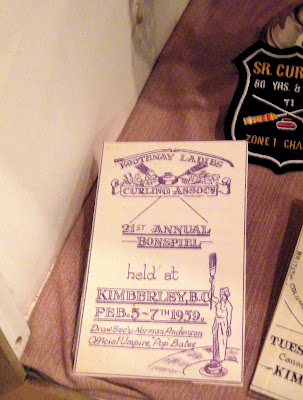Where does the time fly! Our two summer students have come and gone already!
We were fortunate enough to have Allanah return for her second summer with us. Allanah is in the fourth year of her Archaeology degree at Wilfred Laurier in Waterloo, ON. She hopes to specialize in underwater archaeology.
Artist and physics student, Alec, is returning to College of the Rockies in Cranbrook this school year.
Both students had lots to do and shared lots of our history with many very appreciative visitors to the Museum.
Here are some pics of the student's activities over the summer:
Archival Work:
 |
| Alec painting one of a dozen or so drawings he made of a local business as it was in the 1920s. This piece will be part of a diorama depicting the storefronts along the south side of Spokane Street in the Platzl |
 |
| Allanah finishing off the catalogue for a stamp collection. Both students spent many hours scouring in the internet to identify the many stamps in this collection. |
 |
| Nice page of ship stamps: Canada 10-cent full sheet of Inland Vessels, Scott numbers 700 - 703 |
 |
| Cancelled stamps from the Netherlands and India. |
Learning more local history
 |
| Allanah and Alec reading up on the Platzl and 'Bavarianization' history in our main gallery |
 |
| Stepping out Bavarian-style? |
Sharing fascination
 |
| Alec and Allanah with a family of visitors in the 'household' gallery |
 |
| Visitor, sensing the import of this 'end-of-summer photo shoot' of the students, gathers both for a pose. |
Good luck to Allanah and Alec in all your future endeavors! We enjoyed having you at the Museum this summer of 2013. Thanks for all your hard work.

















